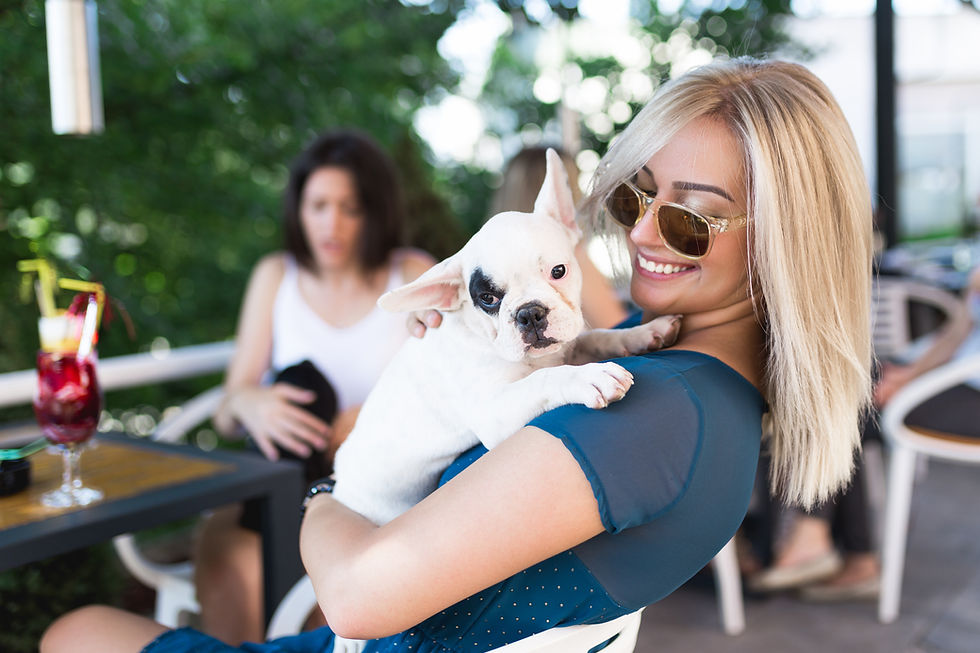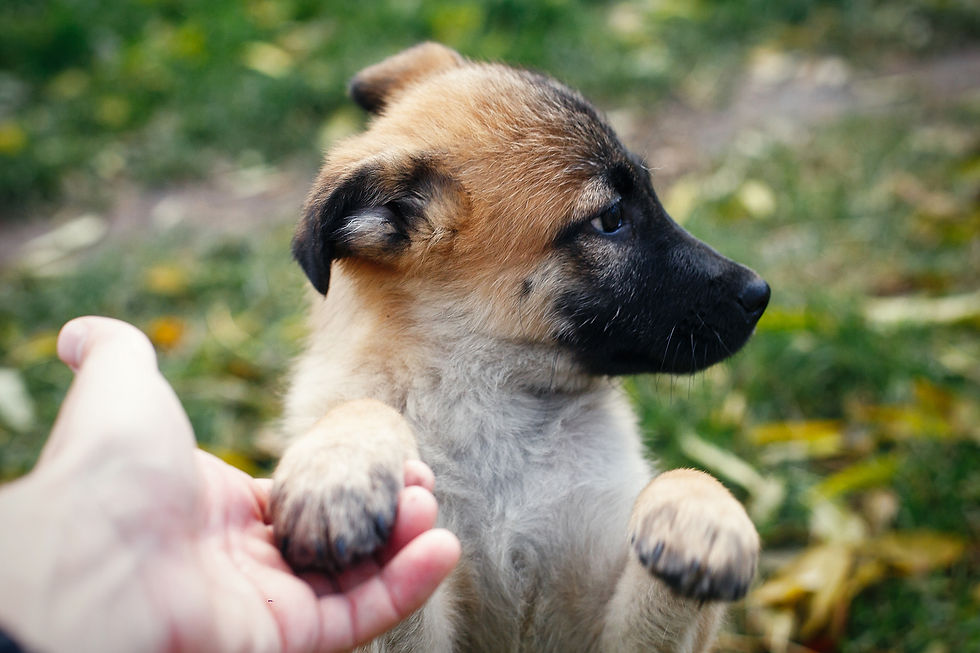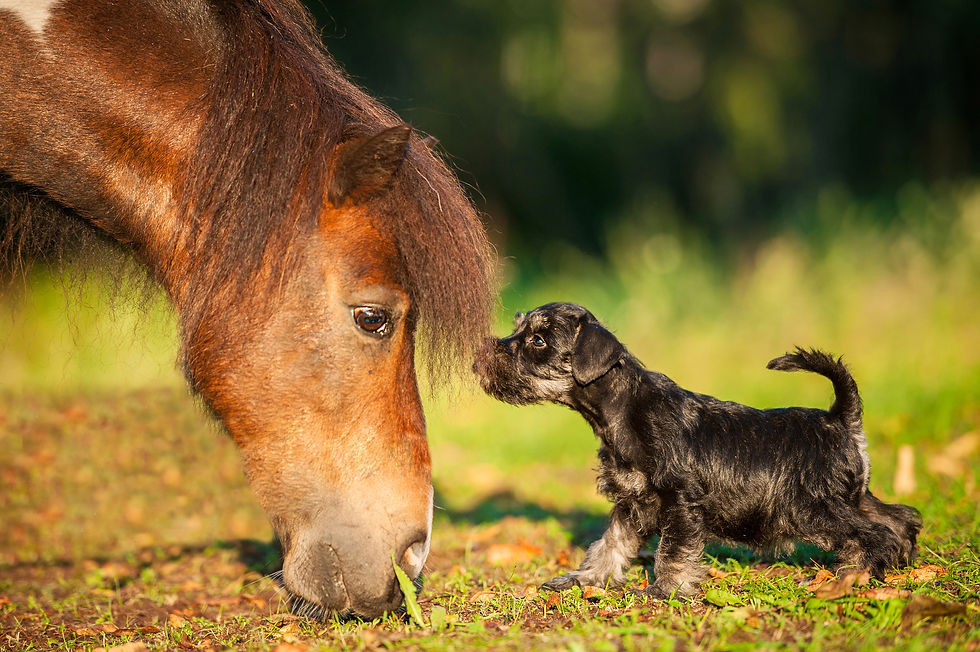Socialization: What You Need to Know Part I — Three Basic Rules
- Alison Solski
- Sep 13, 2018
- 3 min read
Updated: Aug 10, 2023
September 13, 2018 © Hearts and Hounds Dog Training/

“Socialization” is a word that dog and puppy parents hear a lot. “You have to socialize your puppy.” “That dog is aggressive because he wasn’t socialized.” “We’re going to the dog park to socialize our puppy.” “Our puppy is well-socialized because she goes to doggy day-care.”
There is a common misconception that socialization means meeting lots of other dogs, but that is only part of it. Socialization actually means positively exposing the puppy to new things: objects, sounds, environments, surfaces, people, other dogs, and other animals in order to develop the puppy’s skills in dealing with new experiences. It should encompass all the puppy’s senses.
It is important, however, that it is done properly. Following these three guidelines will give your puppy the greatest chance of benefitting the most from this important process.
START RIGHT AWAY
This positive exposure to novel stimuli is most critical between three and about 14 weeks of age. Ideally, if you got your puppy from a responsible breeder, they will have begun exposing the pups to novel stimuli before sending your puppy home with you, typically at around eight weeks of age. That leaves only a few short weeks for puppy parents to accomplish this very important task, so don’t delay! According to a peer-reviewed summary by the American Veterinary Medical Association, “By 8-9 weeks of age most dogs are sufficiently neurologically developed that they are ready to start exploring unfamiliar social and physical environments. Data show that if they are prohibited from doing so until after 14 weeks of age they lose such flexibility and may be forever fearful in these situations.” While some veterinarians still warn people not to take their new puppy outside of their home and yard until they’ve had their full set of vaccinations (at around 16 weeks) for fear of contracting disease, specifically the very serious parvovirus, new studies show that the risk of future relinquishment of the dog due to behaviour problems such as fear, aggression and reactivity is far outweighed by the very low risk of contracting a serious disease. The American Veterinary Society of Animal Behavior now recommends starting socialization as early as seven weeks old.

BE SAFE
Since there is risk of contracting diseases until your puppy is fully immunized, it is important to minimize that risk while providing her with the socialization she needs. The most common way that puppies contract a serious illness is through exposure to the feces or urine of an infected dog, therefore you should avoid dog parks and other public places where you can’t be sure of the health and vaccination record of every dog. Dog parks can pose other risks to your puppy. Dogs who play too roughly and those who don’t like puppies could frighten your pup and cause her to develop a fear of other dogs. Instead, arrange play dates in the home or fenced-in back yard with other puppy parents or those with friendly adult dogs who can tolerate puppies and play nicely with them but, ideally, will let them know when they’ve gone too far. Exposure to other dogs (puppies) doesn’t have to involve interaction. A well-run puppy class in a sanitized, indoor facility provides opportunities for supervised off-leash play and teaches puppies to remain calm and focused on their handler even with other puppies close by.

BE POSITIVE
It is essential that your puppy’s new experiences during this period are positive, as a bad experience can create a lifelong fear or aggression towards the frightening thing, and sometimes be generalized towards other things like it as well. Use treats liberally. Make sure they’re ones your puppy really likes. Watch her body language for signs of stress or discomfort, such as freezing, licking her lips, yawning, turning her head away or trying to get closer to you. Don’t force her to continue. You can try reassuring her that it’s okay and she’s safe. You can use treats to lure her a bit closer, but watch her body language here, too. If she stretches forward for the treat but keeps her back feet firmly planted, she’s indicating that she’ll still very nervous. It would be best to back off and try again another time. If, however, she moves her whole body forward for the treat and doesn’t quickly retreat, there’s a good chance you can try to get a wee bit closer. Some puppies will be “braver” and will handle new experiences easily, while others will be a little more cautious. Let her set the pace.
In Part II of “Socialization: What You Need to Know” we will look at what constitutes a comprehensive socialization plan.
© 2017 Hearts and Hounds Dog Training. All Rights Reserved




Comentários